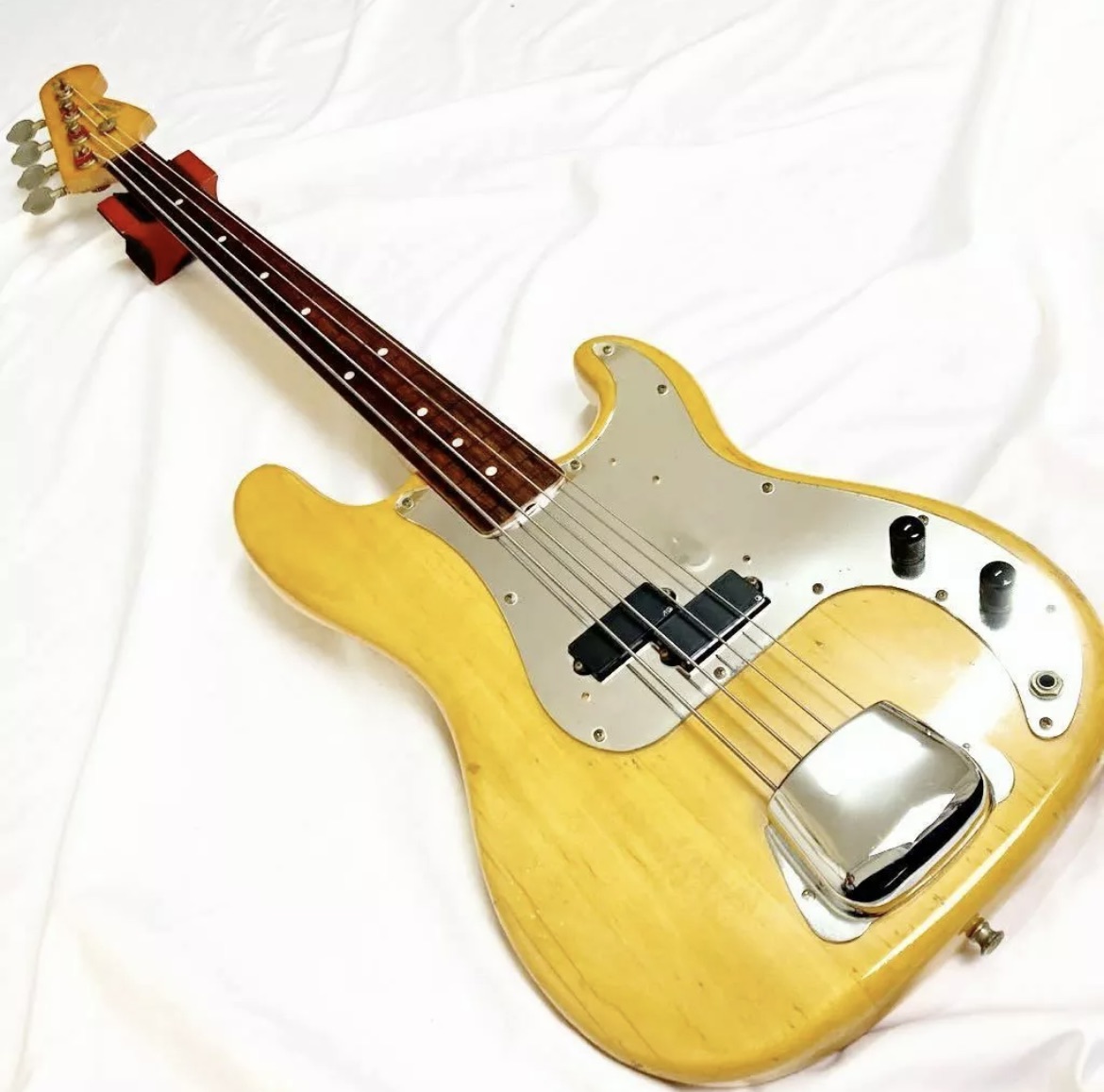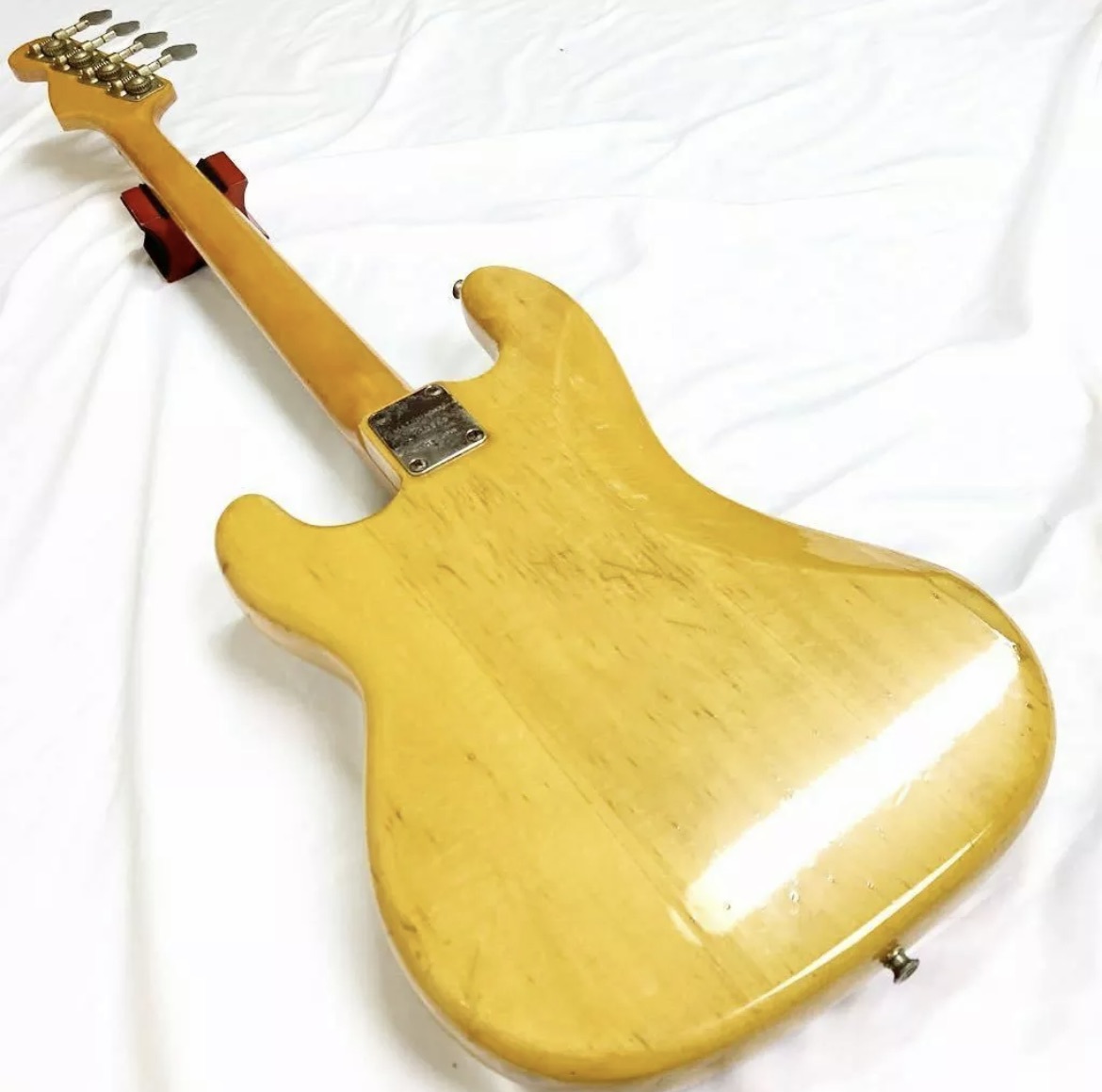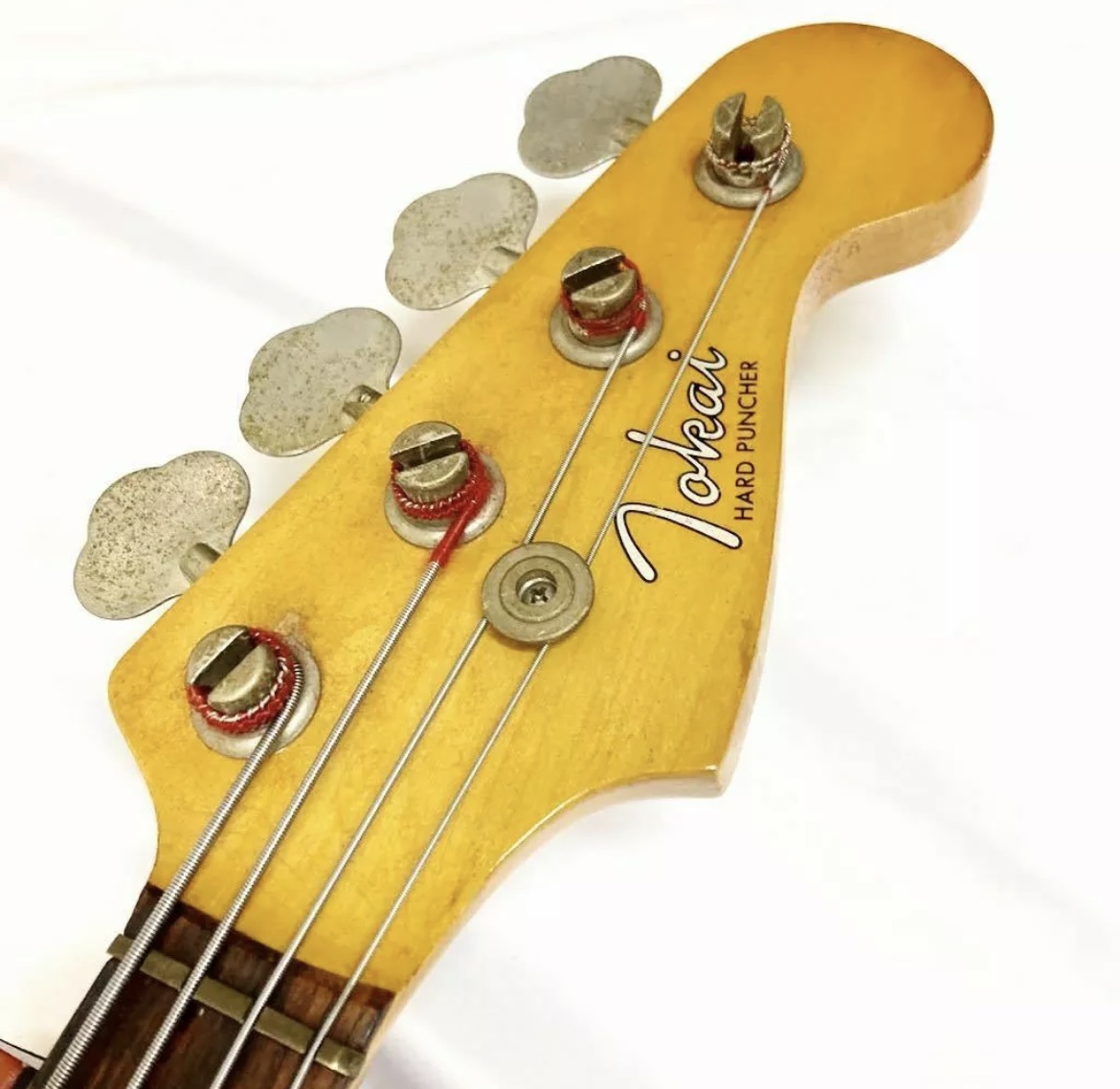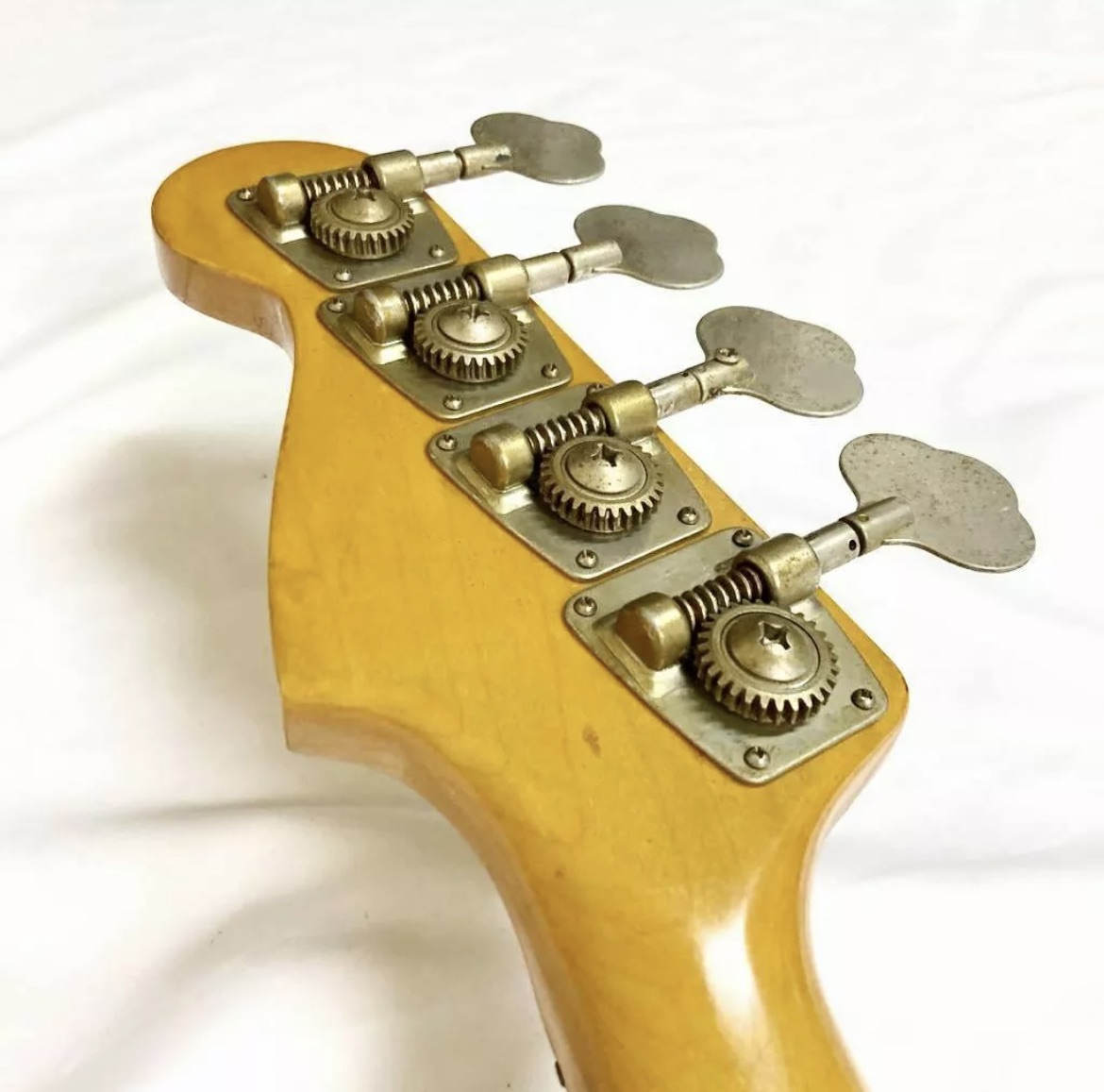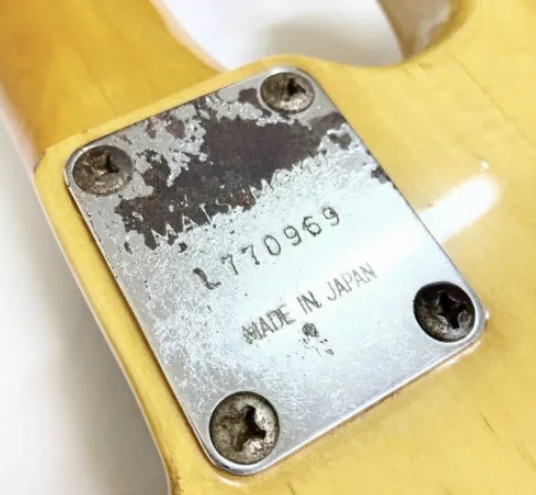Ok, so right now I'm working on two basically identical Hard Punchers. They're both TPB-50G models out of the 1985 catalog, with gold hardware (G), rosewood fretboards and solid paint finishes (i e incl painted neck), one black (ABR) and one in Snow White (ASWR). The serials are 111158 (black) and 114755 (white), the latter has an 11 11 (no divider) body stamp, while the black one (infuriatingly) has had the month number partly painted over, leaving only = 2 visible. No neck stamps visible on the painted necks.
I don't normally pop P-bass pickups off the foam blocks they rest on. They're usually dried out, hard and stuck to the pickups, and prying them off seems a bit risky with old brittle cable and solder joints. But the ones in the black bass just came off when I lifted the pup out of the cavity. So I noticed that it has letter stamps on the bottom flatwork.



It's not exactly clear, but it looks like S B on one bobbin, N B on the other?
Since I've never seen this before, my first thought was that the pickup was a replacement. But then I checked the pics I took while working the white one (which I had already finished), and lo and behold, you can just make out an S and a possibly a C on one of the bobbins of that one as well. Never had the foam blocks off, so I don't have better pics right now.

There are other differences as well. The white one's pickup has (dark) grey bobbins and the older-style black and blue plastic-insulated wired, while the black one's has the later black and white cloth-covered wires and black bobbins, which is what I'd expect in a 1985 Tokai Fender copy. Oddly, the one with the older-looking pickup has the higher serial number.
The meaning? Magnet polarity, North vs South? Not too unlikely. B seemed like it could line up with A and B pickups sets in ST's, but then the other is apparently marked C..?
I did a bit of googling, but so far I've seen only unmarked PB/TPB pickups. I'm pretty clueless when it comes to bass pickups, so before I bite the bullet and take the white one apart again and pry the pickups off the foam: is this something we've seen before?
I don't normally pop P-bass pickups off the foam blocks they rest on. They're usually dried out, hard and stuck to the pickups, and prying them off seems a bit risky with old brittle cable and solder joints. But the ones in the black bass just came off when I lifted the pup out of the cavity. So I noticed that it has letter stamps on the bottom flatwork.



It's not exactly clear, but it looks like S B on one bobbin, N B on the other?
Since I've never seen this before, my first thought was that the pickup was a replacement. But then I checked the pics I took while working the white one (which I had already finished), and lo and behold, you can just make out an S and a possibly a C on one of the bobbins of that one as well. Never had the foam blocks off, so I don't have better pics right now.

There are other differences as well. The white one's pickup has (dark) grey bobbins and the older-style black and blue plastic-insulated wired, while the black one's has the later black and white cloth-covered wires and black bobbins, which is what I'd expect in a 1985 Tokai Fender copy. Oddly, the one with the older-looking pickup has the higher serial number.
The meaning? Magnet polarity, North vs South? Not too unlikely. B seemed like it could line up with A and B pickups sets in ST's, but then the other is apparently marked C..?
I did a bit of googling, but so far I've seen only unmarked PB/TPB pickups. I'm pretty clueless when it comes to bass pickups, so before I bite the bullet and take the white one apart again and pry the pickups off the foam: is this something we've seen before?
























